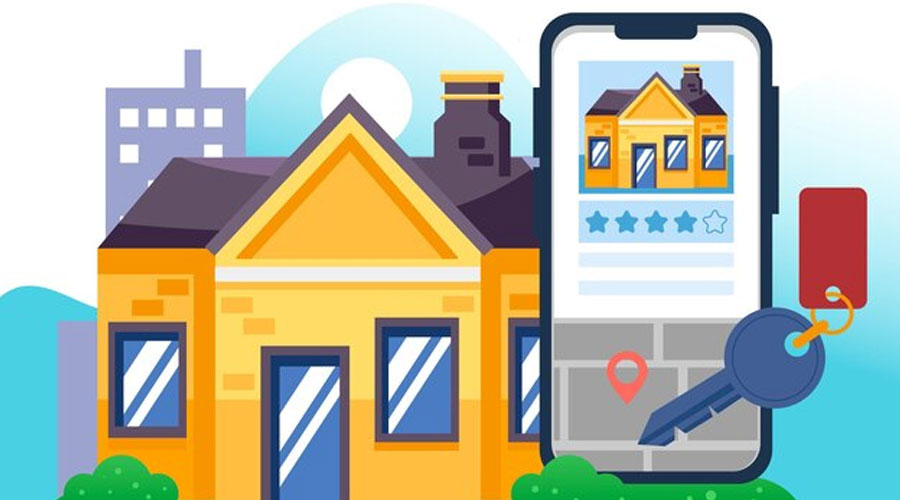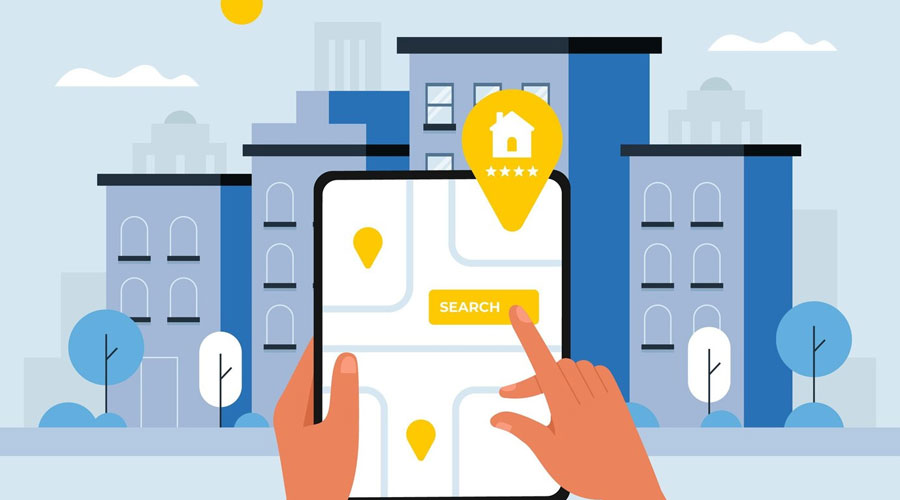Table of Contents
Introduction to Real Estate App Development
In the era of digital transformation, industries are undergoing unprecedented changes, and the real estate sector is no exception. Real estate app development has emerged as a transformative force, reshaping the way properties are bought, sold, and managed. This comprehensive exploration delves into the multifaceted dimensions of real estate app development, examining its evolution, impact, challenges, and the myriad opportunities it presents.
The Evolution of Real Estate App Development
The genesis of real estate app development can be traced back to the proliferation of mobile technology and the increasing reliance on smartphones for everyday tasks. As consumers embraced the convenience of digital platforms, the real estate industry recognized the potential to leverage technology for a more streamlined and user-friendly experience.
1. Early Innovations and Challenges
The initial forays into real estate app development were characterized by basic functionalities, such as property listings and contact information for real estate agents. However, these early apps faced challenges related to limited features, poor user interfaces, and a lack of widespread adoption.
2. Rise of Property Listing Platforms
The turning point in real estate app development came with the advent of property listing platforms. These platforms aggregated property information, making it accessible to a wider audience. This not only provided a more extensive range of options for homebuyers but also laid the foundation for more sophisticated features.
Key Features Reshaping the Real Estate Landscape
Real estate app development introduced a plethora of features that have redefined how individuals interact with the property market. These key features cater to the diverse needs of both consumers and industry professionals, fostering a more efficient and transparent ecosystem.
1. Advanced Search and Filtering Options
Modern real estate apps offer users sophisticated search and filtering options. Buyers can specify their preferences, including location, budget, property type, and amenities, allowing for a more targeted and personalized property search. This not only saves time but also enhances the overall user experience.
2. Virtual Tours and 3D Visualization
The integration of virtual tours and 3D visualization has emerged as a game-changer in real estate app development. Prospective buyers can take virtual walkthroughs of properties, gaining a comprehensive understanding of the layout and design. This immersive experience expedites decision-making and attracts a broader audience, including international buyers.
3. Real-Time Notifications and Alerts
Effective communication is crucial in the fast-paced real estate market. Real estate apps leverage push notifications to keep users informed about new listings, price changes, and other relevant updates. This real-time communication ensures that users remain engaged throughout the buying or selling process.
4. Seamless Communication Channels
Real estate professionals benefit from the integration of seamless communication channels within apps. Features such as in-app messaging and video calls facilitate direct communication between buyers, sellers, and agents, fostering a more collaborative and efficient process.
Impact on Real Estate Professionals
Real estate app development isn’t only transforming the consumer experience; it’s also revolutionizing how industry professionals conduct business. From real estate agents to property managers, these apps offer a suite of tools and functionalities that enhance efficiency, decision-making, and overall operational effectiveness.
1. Efficient Property Management
Real estate agents and property managers benefit from centralized platforms that streamline property management tasks. Real estate apps provide tools for listing management, lead tracking, and client communication, allowing professionals to focus more on building relationships and closing deals.
2. CRM Integration for Enhanced Customer Relationships
Customer Relationship Management (CRM) integration within real estate apps is becoming increasingly common. This integration enables professionals to manage client interactions, track leads, and nurture relationships effectively. This centralized approach enhances customer satisfaction and loyalty.
3. Streamlined Marketing Strategies
Data analytics within real estate apps empower professionals to craft targeted and data-driven marketing strategies. By understanding market trends and user preferences, agents can tailor their marketing efforts to reach the right audience, increasing the likelihood of successful transactions.
Challenges and Opportunities in Real Estate App Development
While the benefits of real estate app development are evident, the landscape is not without its challenges. Addressing these challenges presents opportunities for further innovation and improvement in the realm of real estate technology.
1. Data Security and Privacy Concerns
As real estate apps handle sensitive information, data security and privacy concerns are paramount. Developers must prioritize robust security measures, including encryption and secure authentication, to protect user data and build trust within the user base.
2. User Adoption and Education
The success of real estate apps depends on user adoption. Educating users about the benefits and functionalities of these apps is crucial. Developers and industry stakeholders should invest in user-friendly interfaces, tutorials, and customer support to encourage widespread adoption.
3. Integration with Legacy Systems
In some cases, real estate professionals may be accustomed to traditional methods and legacy systems. Integrating new real estate apps with existing workflows and systems can be a challenge. Developers should prioritize seamless integration to ensure a smooth transition for industry professionals.
Key Features and Functionality
In the fast-paced world of real estate, staying ahead requires continuous innovation. As real estate app development evolves, it’s crucial to explore and implement key features and functionalities that not only meet user expectations but also set new standards in the industry. In this comprehensive guide, we delve into the additional key features and functionalities that can elevate real estate apps to new heights, providing an unparalleled user experience.
1. Artificial Intelligence (AI) and Machine Learning (ML) Integration:
Integrating AI and ML into real estate apps opens up a realm of possibilities. These technologies can analyze user behavior, predict preferences, and offer personalized recommendations. AI-driven chatbots can provide instant responses to user queries, enhancing customer service. ML algorithms can also assist in predicting property values based on various factors, providing users with valuable insights for decision-making.
2. Augmented Reality (AR) for Enhanced Property Viewing:
Taking virtual tours to the next level, AR allows users to overlay digital information onto the real world. With AR, prospective buyers can use their smartphones or AR glasses to get a real-time view of a property’s surroundings, nearby amenities, and even visualize potential interior design changes. This immersive experience not only captivates users but also aids in making more informed decisions.
3. Blockchain for Secure Transactions:
Blockchain technology can revolutionize the way real estate transactions are conducted. By providing a secure and transparent ledger, blockchain ensures the integrity of property records, reducing the risk of fraud. Smart contracts, powered by blockchain, enable automated, secure, and transparent property transactions, streamlining the buying and selling process.
4. Internet of Things (IoT) for Smart Homes:
The integration of IoT in real estate apps facilitates the creation of smart homes. Users can control and monitor various aspects of their properties, such as security systems, thermostats, lighting, and more, directly from the app. Additionally, IoT sensors can provide real-time data on property conditions, helping users make informed decisions about maintenance and upgrades.
5. Advanced Property Search Filters:
Enhancing the search functionality of real estate apps is crucial for user satisfaction. Implementing advanced filters, such as proximity to public transportation, school ratings, and crime statistics, allows users to fine-tune their property search based on specific criteria. The more personalized and accurate the search results, the higher the chances of users finding their ideal property.
6. Social Media Integration for Networking:
Real estate is inherently a social endeavor, and integrating social media features into apps can enhance networking opportunities. Users can share property listings, seek recommendations, and connect with real estate professionals seamlessly through social media integration. This not only expands the app’s user base but also fosters a sense of community within the real estate ecosystem.
7. Predictive Analytics for Market Trends:
Keeping abreast of market trends is crucial for both buyers and sellers. Real estate apps can leverage predictive analytics to forecast market trends, helping users make informed decisions about when to buy or sell. By analyzing historical data and current market conditions, predictive analytics can provide valuable insights into future property values and investment opportunities.
8. Multi-language Support for Global Reach:
In an increasingly globalized world, real estate markets attract international buyers and investors. Offering multi-language support in real estate apps ensures that users from different linguistic backgrounds can access and navigate the platform comfortably. This expands the app’s reach and appeal to a diverse and global audience.
Technological Stack for Real Estate App Development
In the dynamic landscape of real estate, technological advancements play a pivotal role in reshaping the industry. To create robust, scalable, and user-friendly real estate applications, developers must leverage a comprehensive technological stack. This article explores the essential components of the technological stack for real estate app development, offering insights into the tools and frameworks that empower developers to craft cutting-edge solutions.
1. Front-End Development
User Interface (UI) Design
Front-end development is the cornerstone of creating an engaging and intuitive user experience. A responsive and visually appealing UI is crucial for real estate apps, as it directly influences user satisfaction and engagement. Developers often use popular frameworks like React, Angular, or Vue.js for building dynamic and interactive user interfaces.
Responsive Design
Given the diverse range of devices users utilize, responsive design is essential. Utilizing frameworks like Bootstrap or Foundation ensures that the real estate app adapts seamlessly to different screen sizes, providing a consistent and optimal user experience across desktops, tablets, and smartphones.
2. Back-End Development
Server-Side Language
The choice of a server-side language is a critical decision in back-end development. Python, Node.js, Ruby on Rails, and Java are commonly used languages in real estate app development. Each has its strengths, and the selection depends on factors such as development speed, scalability, and the specific needs of the project.
Database Management
Efficient data management is imperative for real estate apps, which deal with large volumes of property information. Relational databases like PostgreSQL and MySQL are popular choices, offering robust data handling capabilities. NoSQL databases like MongoDB are also gaining traction for their flexibility, especially when dealing with unstructured data.
Server Architecture
The architecture of the server significantly influences the app’s performance and scalability. Microservices architecture, where the app is divided into independent, loosely coupled services, is a prevalent choice for real estate apps. This allows for better scalability, ease of maintenance, and fault isolation.
3. Application Programming Interface (API) Integration
Integration of Third-Party APIs
Real estate apps often integrate with third-party services for various functionalities. Integration with mapping APIs, such as Google Maps or Mapbox, enhances the app with geolocation features and map-based property searches. Payment gateways, social media APIs, and property data APIs are also commonly integrated to provide a seamless user experience.
Custom API Development
Developing custom APIs allows real estate apps to tailor functionalities to their specific needs. This includes property search, user authentication, and data retrieval. RESTful APIs are a popular choice due to their simplicity and scalability, enabling smooth communication between the front end and back end.
4. Mobile App Development
Native vs. Hybrid Development
The choice between native and hybrid development depends on factors like performance, development time, and the desired user experience. Native development, using languages like Swift for iOS or Kotlin for Android, provides optimal performance and access to device-specific features. Hybrid frameworks like React Native or Flutter enable cross-platform development, streamlining the process and reducing development time.
Augmented Reality (AR) and Virtual Reality (VR)
The integration of AR and VR technologies is transforming the way users interact with real estate apps. AR can provide users with virtual property tours and interior design previews, enhancing the visualization of properties. VR, on the other hand, can create immersive experiences for remote property viewing, making it a valuable addition to high-end real estate applications.
5. Cloud Computing
Hosting and Storage
Cloud computing services, such as Amazon Web Services (AWS), Microsoft Azure, and Google Cloud Platform, offer scalable and cost-effective solutions for hosting and storage. Cloud services provide the flexibility to scale resources based on demand, ensuring optimal performance during peak usage periods.
Security and Compliance
Ensuring the security of user data is paramount in real estate app development. Cloud providers offer robust security features, including encryption, access controls, and compliance certifications. Implementing secure practices and regularly updating security protocols are essential to protect user information.
6. Data Analytics and Business Intelligence
Data Collection and Analysis
Real estate apps generate vast amounts of data, including user interactions, property searches, and market trends. Implementing data analytics tools, such as Google Analytics or Mixpanel, enables developers to gather valuable insights. This data-driven approach empowers businesses to make informed decisions, refine marketing strategies, and enhance user engagement.
User Experience (UX) Optimization for Real Estate Apps
In the rapidly evolving landscape of real estate app development, creating a seamless and user-friendly experience is paramount. User Experience (UX) optimization plays a pivotal role in ensuring that real estate apps not only meet but exceed user expectations. This comprehensive guide explores the various facets of UX optimization for real estate apps, delving into strategies, best practices, and emerging trends that can elevate the overall user experience.
Understanding User Experience in Real Estate Apps
User experience encompasses every aspect of an individual’s interaction with a digital product, and real estate apps are no exception. From the initial download to property search, virtual tours, and transaction completion, each step must be designed with the user in mind.
- Intuitive Navigation and Information Architecture
The foundation of a positive UX begins with intuitive navigation and a well-structured information architecture. Users should be able to effortlessly navigate through the app, accessing key features such as property listings, search filters, and communication tools. Clear categorization and logical flow enhance the overall user journey.
- Responsive Design for Cross-Device Compatibility
Given the diverse range of devices users may employ, real estate apps must be optimized for responsiveness. Whether accessed on a smartphone, tablet, or desktop, the app should provide a consistent and visually appealing experience. Responsive design ensures that users can seamlessly transition between devices without sacrificing functionality or aesthetics.
Enhancing Virtual Tours and 3D Visualization
- Immersive Virtual Reality (VR) Experiences
As technology advances, real estate apps can leverage immersive Virtual Reality (VR) experiences to revolutionize property viewing. Integrating VR allows users to take virtual tours of properties, providing a lifelike experience that goes beyond traditional images and videos. This not only enhances the user experience but also accelerates the decision-making process.
- Optimized 3D Models and High-Quality Imagery
For properties that don’t require VR, optimizing 3D models and high-quality imagery is crucial. Users should be able to zoom in, rotate, and explore every aspect of a property through detailed visuals. Implementing fast-loading, high-resolution images contributes to a visually appealing and engaging user experience.
Communication and Collaboration Features
- Instant Messaging and Notifications
Effective communication is the cornerstone of successful real estate transactions. Real estate apps should incorporate instant messaging features that enable seamless communication between buyers, sellers, and agents. Push notifications for new listings, messages, and updates keep users engaged and informed throughout the process.
- Collaborative Tools for Buyers and Agents
Collaboration tools empower buyers and agents to work together efficiently. Features like shared property lists, collaborative notes, and synchronized calendars streamline the communication and coordination between all parties involved. This not only enhances the user experience but also expedites the entire real estate transaction process.
Streamlining Transactions and Documentation
- Efficient Online Transactions
UX optimization extends to the transactional phase, ensuring that users can complete transactions efficiently within the app. Implementing secure online payment gateways, electronic document signing, and a streamlined transaction process reduces friction and enhances user satisfaction.
- Transparent Transaction History and Status Updates
Users appreciate transparency, especially when it comes to financial transactions. Providing a clear transaction history, along with real-time status updates, instills confidence and trust. Users should be able to track the progress of their transactions, from initial offers to closing, through a transparent and user-friendly interface.
Data Security and Privacy Considerations
- Secure Authentication and Authorization
As real estate apps deal with sensitive information, prioritizing data security is non-negotiable. Implementing secure authentication methods and authorization protocols safeguards user data and ensures that only authorized individuals have access to confidential information.
- Transparent Privacy Policies and Consent Mechanisms
User trust is built on transparency. Real estate apps should have easily accessible and comprehensible privacy policies, outlining how user data is collected, stored, and utilized. Implementing explicit consent mechanisms for data processing demonstrates a commitment to user privacy.
Future Prospects and Innovations in Real Estate Technology
As we venture into the future, the real estate industry stands on the cusp of unprecedented technological advancements that promise to redefine how we buy, sell, and manage properties. The convergence of emerging technologies is giving rise to innovative solutions that not only streamline traditional processes but also introduce entirely new paradigms to the real estate landscape.
1. Artificial Intelligence and Machine Learning
The integration of Artificial Intelligence (AI) and Machine Learning (ML) is poised to revolutionize how real estate transactions are conducted. AI algorithms can analyze vast amounts of data to predict market trends, assess property values, and even recommend personalized property listings to potential buyers. Machine Learning, on the other hand, enables systems to learn and adapt, improving the accuracy of predictions over time.
- Predictive Analytics for Market Trends
AI-driven predictive analytics will play a pivotal role in forecasting market trends, allowing real estate professionals to make informed decisions. By analyzing historical data, economic indicators, and social trends, AI can predict shifts in demand, enabling proactive strategies for property development and investment.
- Virtual Property Valuation
Machine Learning algorithms can enhance property valuation accuracy by considering a myriad of factors, including local amenities, infrastructure developments, and even social media sentiments. This not only benefits sellers in determining optimal pricing but also aids buyers in making well-informed investment decisions.
2. Blockchain Technology
Blockchain, known for its secure and transparent nature, is set to disrupt the traditional real estate transaction process. The implementation of blockchain in real estate brings about increased transparency, reduced fraud, and streamlined, efficient transactions.
- Smart Contracts for Seamless Transactions
Smart contracts, powered by blockchain, have the potential to automate and expedite various aspects of real estate transactions. These self-executing contracts can handle tasks such as property transfers, escrow arrangements, and even rental agreements, reducing the need for intermediaries and minimizing the risk of disputes.
- Tokenization of Real Estate Assets
Blockchain technology facilitates the tokenization of real estate assets, allowing properties to be divided into tradable digital tokens. This opens up new possibilities for fractional ownership, making real estate investment more accessible to a broader range of investors.
3. Augmented and Virtual Reality
The evolution of Augmented Reality (AR) and Virtual Reality (VR) technologies is transforming the way potential buyers experience properties. These immersive technologies go beyond virtual tours, providing interactive and realistic experiences that bridge the gap between physical and digital environments.
- Enhanced Virtual Property Tours
Future real estate apps are likely to feature enhanced virtual property tours that use AR and VR to create lifelike, three-dimensional representations of homes. Potential buyers can customize and visualize spaces, experimenting with different layouts and designs before making a purchase decision.
- AR for Neighborhood Exploration
Augmented Reality apps could revolutionize the way buyers explore neighborhoods. By overlaying information about local amenities, schools, and crime rates onto the real-world environment, AR enhances the decision-making process by providing valuable insights into the surrounding community.
Thanks for reading our post “Real Estate App Development”. Please connect with us to learn more about On-Demand App Clone.






















